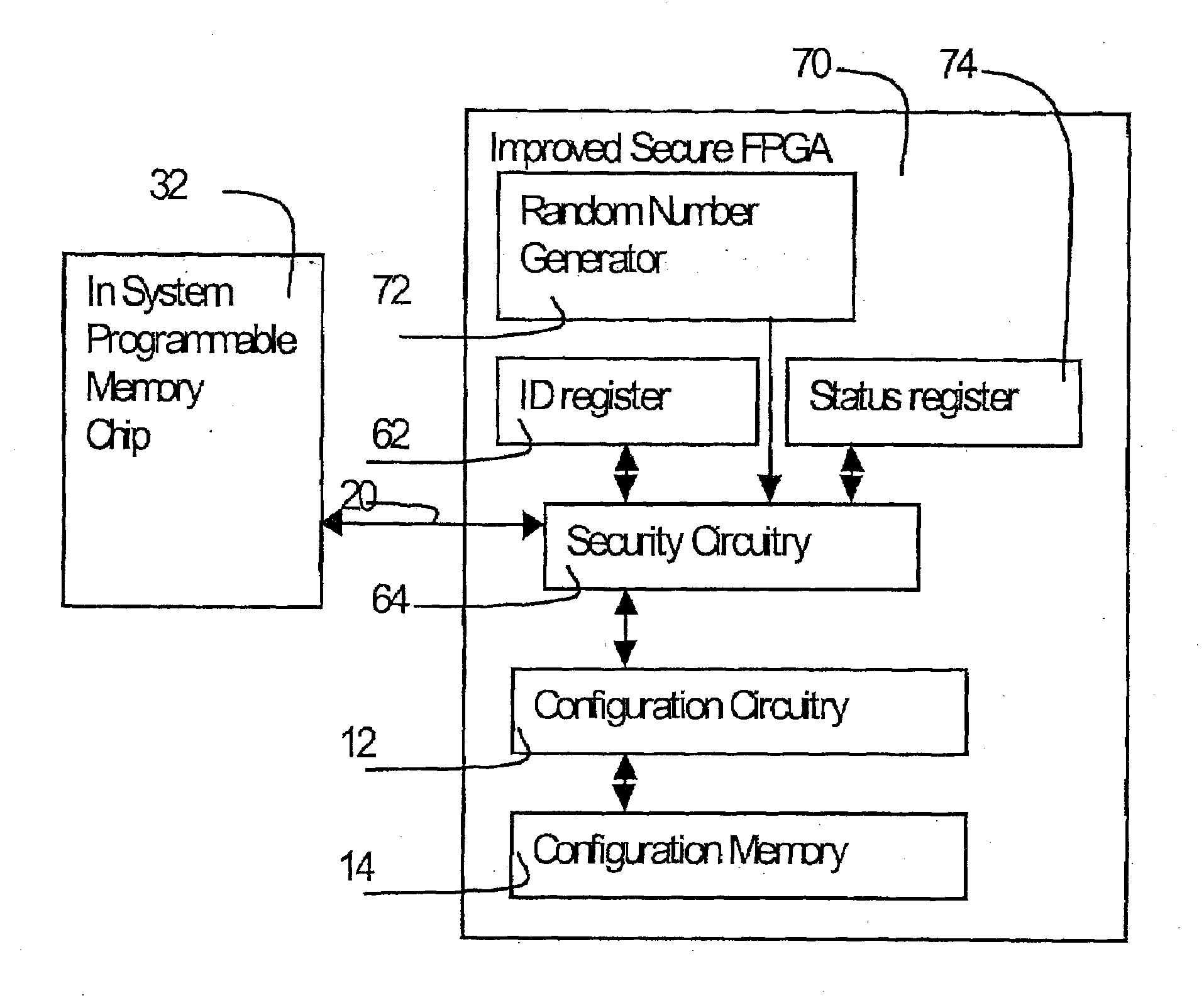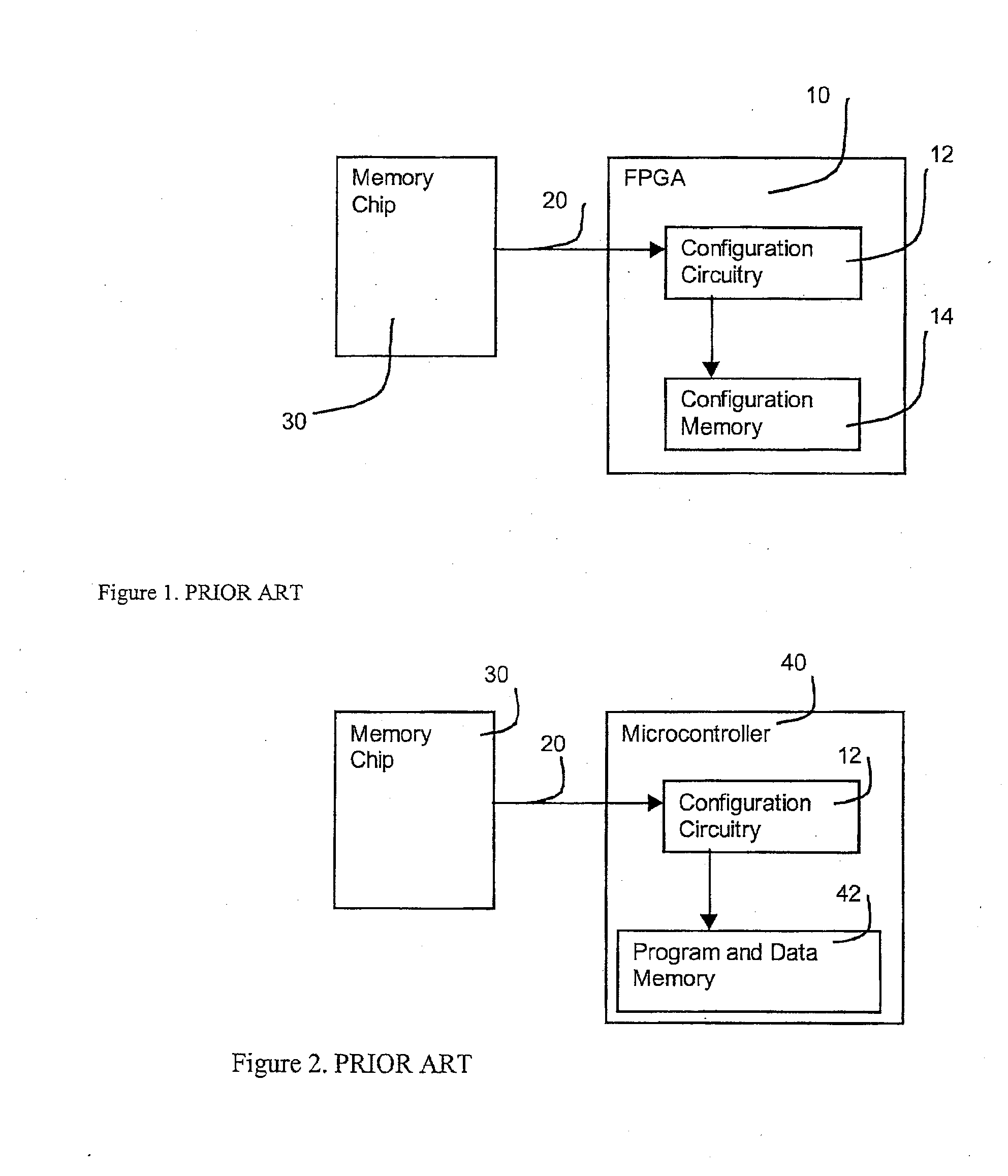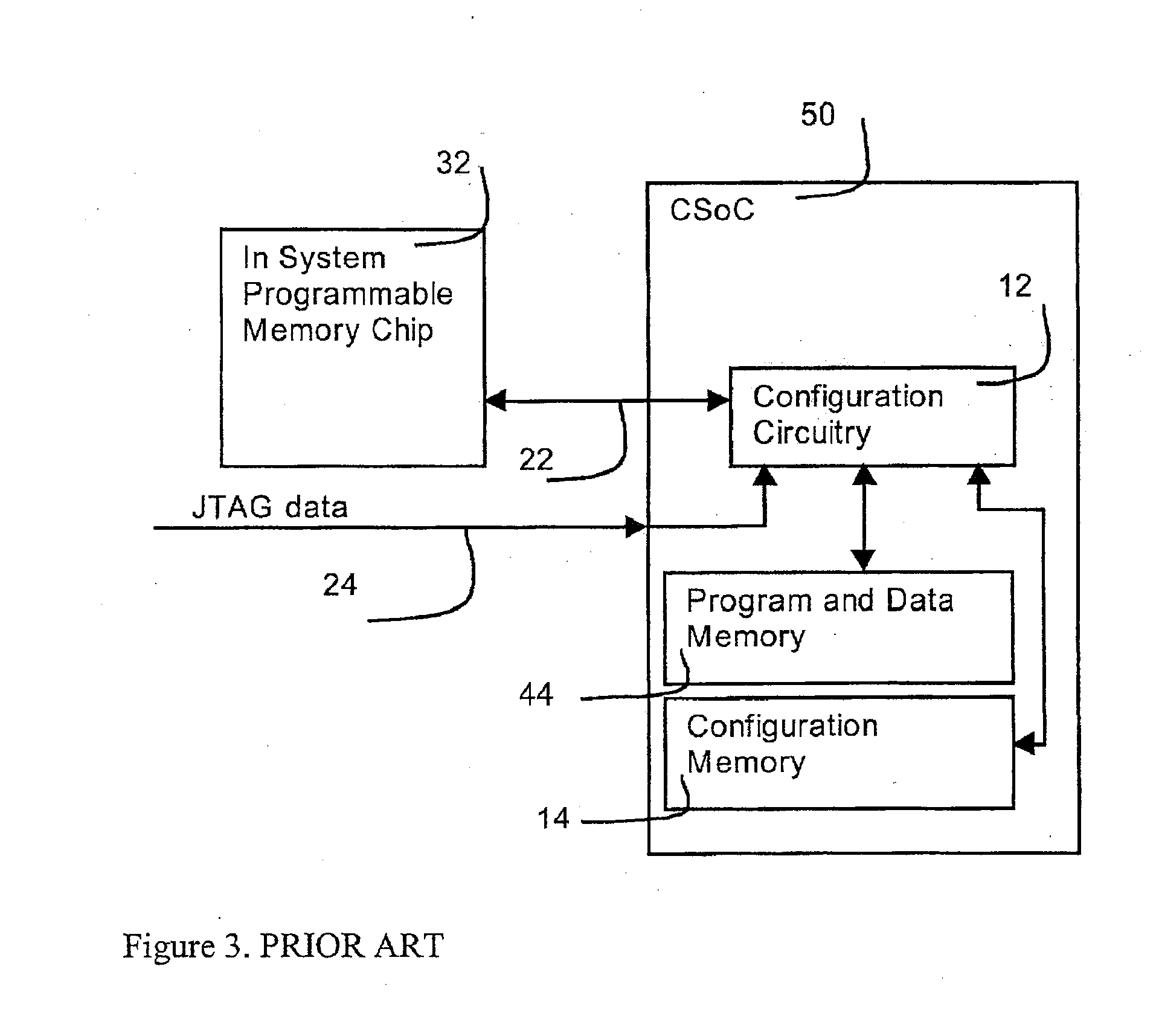Method and Apparatus for Secure Configuration of a Field Programmable Gate Array
a gate array and secure configuration technology, applied in the field of integrated circuits, can solve the problems of lack of user design security, difficult to “clone” a product containing a mask, and the sram programmed fpgas. achieve the effect of compromising the ease of manufactur
- Summary
- Abstract
- Description
- Claims
- Application Information
AI Technical Summary
Benefits of technology
Problems solved by technology
Method used
Image
Examples
Embodiment Construction
[0049]FIG. 1 shows a prior art SRAM programmed FPGA 10 connected to a memory chip 30 via a set of signal traces 20 on a printed circuit board. Configuration circuitry 12 on the FPGA loads programming data from memory 30 into on chip configuration memory 14. Resources on the FPGA not related to programming (such as the logic gates and routing wires which implement the user design) are not shown in this or subsequent illustrations for reasons of clarity but are well understood and are described in manufacturer's literature such as Xilinx Inc. “Virtex 2.5 V Field Programmable Gate Arrays,” Advanced Product Specification, 1998 and the Oldfield and Dorf textbook mentioned above. Set of signals 20 will normally include a data signal to transfer configuration information, a clock signal to synchronize the transfer and several control signals to specify a particular mode of transfer (for example when a sequence of FPGAs can be daisy chained to a single source of programming data). The exact...
PUM
 Login to View More
Login to View More Abstract
Description
Claims
Application Information
 Login to View More
Login to View More - R&D
- Intellectual Property
- Life Sciences
- Materials
- Tech Scout
- Unparalleled Data Quality
- Higher Quality Content
- 60% Fewer Hallucinations
Browse by: Latest US Patents, China's latest patents, Technical Efficacy Thesaurus, Application Domain, Technology Topic, Popular Technical Reports.
© 2025 PatSnap. All rights reserved.Legal|Privacy policy|Modern Slavery Act Transparency Statement|Sitemap|About US| Contact US: help@patsnap.com



